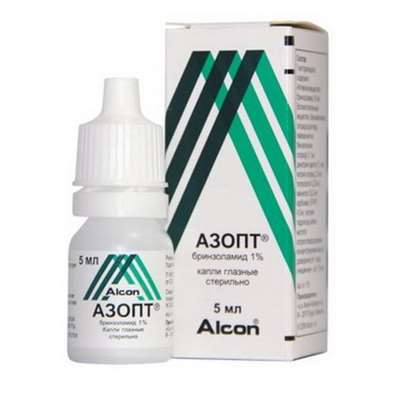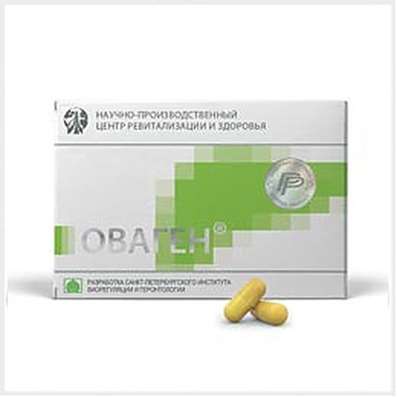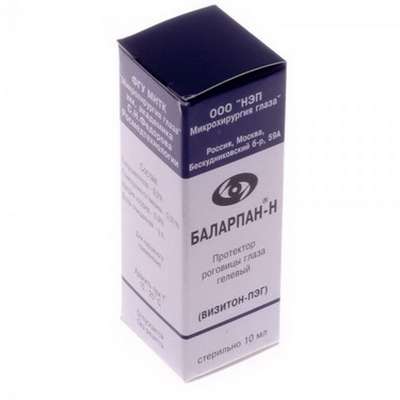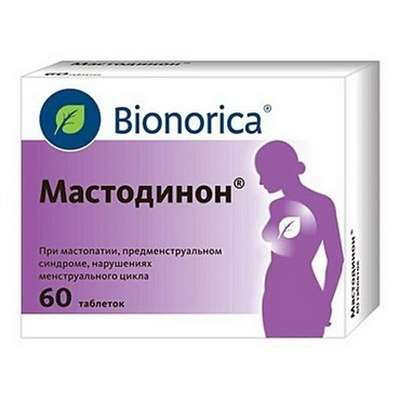Instruction for use: Moxonitex
I want this, give me price
Dosage form: film-coated tablets
Active substance: Moxonidinum
ATX
C02AC05 Moxonidine
Pharmacological group
Hypotensive central agent [I1-imidazoline receptor agonists]
Nosological classification (ICD-10)
I10 Essential (primary) hypertension: hypertension; Arterial hypertension; Arterial hypertension crisis course; Essential Hypertension; Essential hypertension; Essential hypertension; Essential hypertension; Essential hypertension; Primary hypertension; Arterial hypertension, complications of diabetes; The sudden increase in blood pressure; Hypertensive disorders of blood circulation; hypertensive condition; hypertensive crises; arterial Hypertension; malignant Hypertension; Hypertonic disease; hypertensive crises; accelerated hypertension; malignant hypertension; The aggravation of hypertensive disease; Transient hypertension; Isolated systolic hypertension
I15 Secondary hypertension: Arterial hypertension, complications of diabetes; hypertension; The sudden increase in blood pressure; Hypertensive disorders of blood circulation; hypertensive condition; hypertensive crises; hypertension; arterial Hypertension; malignant Hypertension; hypertensive crises; accelerated hypertension; malignant hypertension; The aggravation of hypertensive disease; Transient hypertension; hypertension; Arterial hypertension; Arterial hypertension crisis course; renovascular hypertension; Hypertension symptomatic; Renal hypertension; Renovascular hypertension; renovascular hypertension; Symptomatic hypertension
Composition
Tablets covered with a film coating.
active substance: Moxonidine 0.2 mg; 0.4 mg
Auxiliary substances: lactose monohydrate - 94.5 / 94.3 mg, povidone-K25 - 2/2 mg, crospovidone - 3/3 mg, magnesium stearate - 0.3 / 0.3 mg
Film membrane: Opadry Y 1 7000 - 3.498 / 3.465 mg (titanium dioxide - 1.093 / 1.083 mg, hypromellose - 2.186 / 2.165 mg, macrogol 400 - 0.219 / 0.217); Iron dye oxide red - 0.002 / 0.035 mg
Description of dosage form
Dosage of 0.2 mg: round biconvex tablets, covered with a film coat of light pink color.
Dosage 0.4 mg: round biconvex tablets, covered with a film coating of dark pink color.
Pharmachologic effect
Mode of action - antihypertensive, excitatory I1-imidazoline receptors.
Pharmacodynamics
Selective agonist imidazoline receptors responsible for reflex control of the sympathetic nervous system (localized in the ventro-lateral region of the medulla oblongata). Slightly associated with central α2-adrenoreceptors, reduces SAD and DAD for a single and prolonged use.
With long-term use, it reduces myocardial hypertrophy of the left ventricle, neutralizes the signs of myocardial fibrosis, microarthiopathy, normalizes the capillary blood supply of the myocardium, reduces OPSS, pulmonary vascular resistance, while cardiac output and heart rate do not change significantly. Against the background of treatment, the activity of norepinephrine and epinephrine, renin, angiotensin II at rest and under exercise, atrial natriuretic peptide (under load) and aldosterone in blood plasma decreases. Reduces the resistance of tissues to insulin by 21% compared with placebo in obese patients and insulin resistant patients with moderate severity of hypertension, stimulates the release of growth hormone. Does not affect the exchange of glucose and lipids.
Pharmacokinetics
Suction. After oral administration, it is quickly and almost completely absorbed from the digestive tract (about 90%). The intake of food by the amount of absorption is not affected. Cmax is achieved after 30-180 minutes after oral administration and is 1-3 ng / ml. The interval between the achievement of Cmax and the pronounced decrease in blood pressure at rest differs by an average of 10%, with a load of 7.7%. The duration of action is more than 12 hours. Bioavailability with a single application inside is 88%, which indicates the absence of a significant effect of the primary passage through the liver.
Distribution. It penetrates through the BBB. Do not cumulate with prolonged use.
Vd - 1.4-3 l / kg. Connection with blood plasma proteins - 7%.
Metabolism. Metabolized 10-20% of moxonidine with the formation of 4,5-dehydromoxonidine and aminomethanamine derivative.
Excretion. T1 / 2 is 2-3 hours. In the first 24 hours, more than 90% of the kidneys are excreted (50-75% in unchanged form, 20% in the form of metabolites) and about 1% with bile. Moxonidine is excreted in small amounts during hemodialysis.
Special patient groups
Elderly age. There were no significant differences in pharmacokinetics in young patients and elderly patients. Correction of the dose is not required provided normal renal function.
Impaired renal function. In patients with moderate (Cl creatinine 30-60 ml / min) and severe (Cl creatinine <30 ml / min), the impaired renal function Css in the blood plasma and the final T1 / 2 are approximately 2 and 3 times higher, respectively, than in patients with Arterial hypertension with normal renal function (Cl creatinine> 90 ml / min). Therefore, for patients with severe renal dysfunction, the drug is contraindicated, and with moderate renal dysfunction, it should be used with caution, the dose should be selected individually.
Violation of the function of the liver. There are no reliable studies of the use of moxonidine in patients with impaired liver function. Since moxonidine is not practically metabolized in the liver, a disturbance of its function does not have a pronounced effect on the pharmacokinetics of the drug.
Indications of Moxonitex
Arterial hypertension.
Contraindications
Hypersensitivity to moxonidine or any other component of the drug;
Hereditary lactose intolerance, lactase deficiency or glucose-galactose malabsorption;
Severe cardiac rhythm disturbances (pronounced bradycardia (<50 bpm at rest), sinus node weakness syndrome or sinoatrial blockade, AV blockade II and III degree);
Chronic heart failure (NYHA class III-IV functional class);
Severe renal failure (Cl creatinine <30 ml / min, serum creatinine concentration> 160 μmol / L) and hemodialysis;
Simultaneous use with tricyclic antidepressants;
Age to 18 years;
The period of breastfeeding.
With caution: AV-blockade of I degree (risk of developing bradycardia); Coronary artery disease (including IHD, unstable angina, early post-infarction period); Peripheral circulatory diseases (including intermittent claudication, Raynaud's syndrome); epilepsy; Parkinson's disease; depression; glaucoma; Moderate renal insufficiency (Cl creatinine 30-60 ml / min, serum creatinine 105-160 μmol / l); liver failure; pregnancy.
Application in pregnancy and lactation
There were no reliable studies of the use of moxonidine in pregnant women. Studies in animals have shown an embryotoxic effect. There are no clinical data on the negative effect on the course of pregnancy. However, Moxonitex should be used in pregnant women only if the potential benefit to the mother exceeds the possible risk to the fetus.
Moxonidine penetrates into breast milk, women during the period of treatment are recommended to stop breastfeeding or to cancel the drug.
Side effects
Side effects are given in accordance with the classification of WHO and the frequency of development as follows: often (> 1/100, <1/10); Infrequently (> 1/1000, <1/100); Rarely (> 1/10000, <1/1000) and very rarely (<1/10000), including individual messages.
From the CVS: infrequent - bradycardia, marked decrease in blood pressure (including orthostatic hypotension).
From the side of the central nervous system: often - dizziness (vertigo), headache, drowsiness, insomnia; Infrequently - a syncope, the raised excitability.
From the side of the organ of hearing and labyrinthine disorders: infrequent - ringing in the ears.
From the side of the digestive system: very often - dryness of the oral mucosa; Often - diarrhea, nausea, vomiting, indigestion.
From the skin and subcutaneous tissues: often - skin itching, skin rash; Infrequently - angioedema (edema of Quincke).
From the musculoskeletal system and connective tissue: often - pain in the back; Infrequently - pain in the neck.
General disorders and disorders at the injection site: often - asthenia; Infrequent peripheral edema.
Interaction
The combined use of moxonidine with other antihypertensive agents leads to an additive effect. Tricyclic antidepressants can reduce the effectiveness of antihypertensive agents of central action, and therefore it is not recommended that they be taken together with moxonidine.
Moxonidine may enhance the sedative effect of tricyclic antidepressants, tranquilizers, ethanol, sedatives, and hypnotics.
Moxonidine is able to moderately improve the weakened cognitive function of patients receiving lorazepam.
Moxonidine may enhance the sedative effect of benzodiazepine derivatives when administered concomitantly.
Moxonidine is excreted by tubular secretion, so its interaction with other drugs released by tubular secretion is not excluded.
Dosing and Administration
Inside, regardless of food intake, with plenty of liquid. Dose regimen is selected individually.
In the absence of other prescriptions, Moxonitex should be administered in the following doses: as the initial dose, 0.2 mg of the drug in the morning. With insufficient therapeutic effect, the dose after 3 weeks is increased to 0.4 mg / day once or in 2 divided doses. The maximum daily dose is 0.6 mg; The maximum single dose is 0.4 mg.
In patients with moderate renal impairment (Cl creatinine 30-60 ml / min), a single dose should not exceed 0.2 mg, and the maximum daily dose - 0.4 mg.
Overdose
Symptoms: headache, marked decrease in blood pressure, bradycardia, palpitations, weakness, drowsiness, dryness of the oral mucosa, rarely vomiting and epigastric pain. Paradoxical arterial hypertension and hyperglycemia are potentially possible.
Treatment: symptomatic. There is no specific antidote.
With a pronounced decrease in blood pressure, it is recommended that the BCC be restored by introducing a liquid.
Alpha-adrenoreceptor antagonists can reduce or eliminate transient hypertension in an overdose of moxonidine.
Special instructions
During treatment, regular monitoring of blood pressure, heart rate and ECG is necessary. If it is necessary to cancel simultaneously taken beta-blockers and Moxonitex, beta-blockers are the first to be canceled and only a few days later the drug Moxoniteks.
Currently, there is no evidence that the discontinuation of the use of Moxonitex leads to an increase in blood pressure. However, Moxonitex should not be discontinued.
In elderly patients, the risk of developing cardiovascular complications due to the use of antihypertensive drugs may be increased, so therapy with Moxonitex should be started with a minimal dose.
Impact on the ability to manage vehicles and mechanisms. The effect of Moxonitex on the ability to drive vehicles or control technology was not studied. However, taking into account the possibility of dizziness and drowsiness, patients should be careful when engaging in potentially hazardous activities requiring increased attention, such as driving vehicles or controlling equipment, requiring increased concentration.
Release Form
Tablets, film-coated, 0.2 and 0.4 mg. By 7 or 14 table. In the blister pack. By 2 or 4 bl. In a cardboard box.
Manufacturer by
Produced: Salyutas Pharma GmbH, Otto-von-Guricke Alley 1, 39179 Barleben, Germany.
A comment
RU1608518737
Conditions of supply of pharmacies
On prescription.
Storage conditions of the drug Moxonitex
At a temperature not exceeding 25 ° C.
Keep out of the reach of children.
The shelf life of the drug Moxonitex
2 years.
Do not use beyond the expiration date printed on the package.

 Cart
Cart





